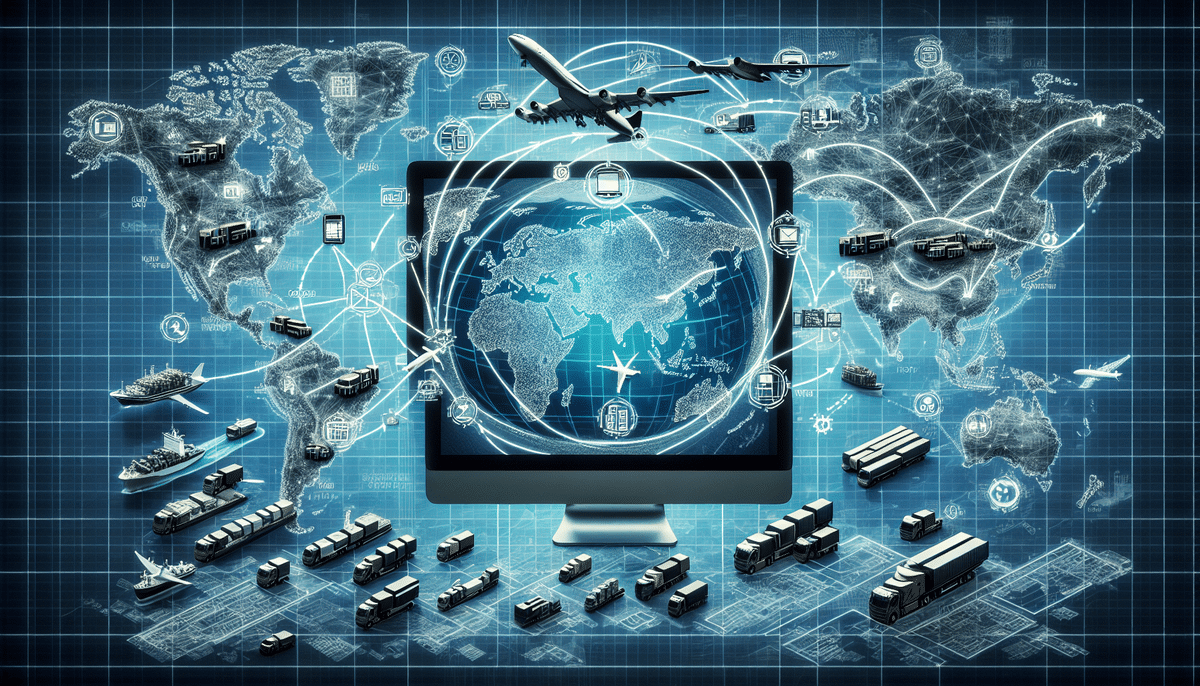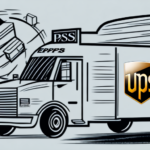Streamlining International E-Commerce Logistics Through Shipping
E-commerce has revolutionized the way businesses operate, enabling them to sell products to customers worldwide. According to Statista, global e-commerce sales surpassed $5 trillion in 2023. However, international e-commerce logistics can be a complex and challenging process, involving multiple hurdles such as regulatory compliance, customs clearance, and efficient shipping. Effective logistics require meticulous planning, seamless communication, and collaboration with reliable shipping partners. In this article, we delve into the fundamentals of international e-commerce logistics and emphasize the significance of streamlining logistics processes to boost efficiency and enhance customer satisfaction.
Understanding the Basics of International E-Commerce Logistics
International e-commerce logistics encompasses the various processes involved in transporting products across borders, from packaging and shipping to customs clearance and final delivery. Unlike domestic logistics, international logistics requires businesses to adhere to international regulations, navigate language barriers, and assess the political and economic stability of the destination country.
Customs Clearance
One of the major challenges in international e-commerce logistics is customs clearance. Each country has its own set of rules and regulations, and non-compliance can lead to delays, fines, or even the seizure of goods. According to the World Trade Organization, efficient customs procedures can reduce shipping times by up to 30%. To mitigate these risks, businesses should partner with experienced customs brokers who can adeptly handle complex customs procedures and ensure all necessary documentation is accurately prepared.
Shipping Methods
Selecting the appropriate shipping method is critical for balancing cost and delivery speed. Factors such as the size and weight of products, destination country, and required delivery timeframe must be considered. Common shipping options include:
- Air Freight: Fast delivery but generally more expensive.
- Sea Freight: Cost-effective for bulky items but slower.
- Express Courier Services: Balance between speed and cost, ideal for smaller packages.
Each shipping method has its own advantages and disadvantages, and businesses must evaluate them carefully to choose the best fit for their specific needs.
The Importance of Streamlining Logistics Processes in E-Commerce
Streamlining logistics processes is essential for the success of any e-commerce venture. By optimizing the shipping workflow, businesses can enhance customer satisfaction and reduce operational costs. According to a study by Harvard Business Review, efficient logistics can increase customer retention rates by up to 25%. Efficient e-commerce logistics enable businesses to:
- Expand market reach
- Minimize the risk of shipping delays
- Increase sales and profitability
Implementing Warehouse Management Systems (WMS)
One effective strategy to streamline logistics is implementing a Warehouse Management System (WMS). A WMS assists in managing inventory levels, tracking shipments, and automating order fulfillment, leading to faster and more accurate processing.
Selecting the Right Shipping Carrier
Additionally, selecting the right shipping carrier is crucial. Factors to consider include:
- Shipping rates
- Delivery times
- Reliability and reputation
Partnering with a dependable carrier can significantly improve the overall shipping experience for customers.
Challenges Faced by E-Commerce Businesses in International Shipping
International shipping presents several challenges, including:
- Language barriers
- Diverse customs regulations
- Time zone differences
- Unpredictable weather conditions
Moreover, cost implications such as shipping fees, taxes, and insurance add to the complexity. Logistics teams must proactively plan for potential disruptions like port congestion, strikes, and compliance issues to ensure smooth operations.
Risk of Lost or Damaged Packages
Another significant challenge is the risk of lost or damaged packages, especially when shipping high-value or fragile items. To mitigate this risk, businesses should:
- Use reliable shipping carriers
- Invest in quality packaging materials
- Establish a clear policy for handling lost or damaged goods, including claims and reimbursements
Factors to Consider When Selecting an International Shipping Company
Choosing the right shipping company is pivotal in overcoming the challenges of international e-commerce logistics. Key factors to evaluate include:
- Shipping Speed: Ensures timely delivery to maintain customer satisfaction.
- Insurance Coverage: Protects against loss or damage during transit.
- Tracking Capabilities: Provides real-time tracking for transparency.
- Customer Service: Offers support for resolving issues promptly.
Additionally, reviewing the shipping company's reputation and customer feedback can provide insights into their reliability and service quality.
Cost Considerations
Cost is another critical factor. Businesses should compare shipping rates across different companies and be aware of any additional fees or surcharges, such as fuel or customs fees, to ensure they receive fair pricing for the services rendered.
How to Optimize Your Packaging for International Shipping
Optimizing packaging is essential for reducing shipping costs and ensuring product safety during transit. Consider the following strategies:
- Durable yet Lightweight Materials: Protect products while minimizing shipping fees.
- Clear and Accurate Labeling: Complies with destination country regulations and facilitates smooth customs clearance.
- Eco-Friendly Materials: Demonstrates commitment to sustainability, which can enhance brand reputation.
Additionally, using standardized packaging sizes can help avoid extra fees and customs delays. For fragile items, appropriate cushioning materials are necessary to prevent damage during shipping.
Customs Regulations and Compliance for International E-Commerce Logistics
Compliance with customs regulations is a complex yet critical aspect of international e-commerce logistics. Businesses must:
- Understand tariff rates and import restrictions in the destination country
- Ensure products meet local labeling and language requirements
- Prepare accurate and complete documentation for customs clearance
Being aware of potential customs delays and additional costs, such as storage fees, is also important. Partnering with a reliable logistics provider can aid in navigating compliance issues and expediting the customs clearance process. Implementing a robust compliance program helps in meeting all regulatory requirements and avoiding penalties.
Implementing a Robust Tracking and Communication System for Efficient Shipping
Effective communication and tracking systems are vital for managing international e-commerce logistics efficiently. Implementing a system that provides:
- Real-time tracking of shipments from origin to destination
- Automated updates to customers regarding their order status
- Transparent communication channels for addressing issues promptly
can significantly enhance the shipping experience. For instance, if a package is delayed or lost, a robust tracking system can provide immediate updates, allowing both the business and the customer to take necessary actions.
Moreover, such systems enable better inventory management and timely delivery, contributing to increased customer satisfaction and loyalty.
Best Practices for Managing Returns and Exchanges in International E-Commerce Logistics
Handling returns and exchanges efficiently is crucial for maintaining customer trust and satisfaction in international e-commerce. Best practices include:
- Clear International Return Policy: Must comply with local regulations and provide straightforward instructions for customers.
- Pre-Paid Return Labels: Simplifies the return process for customers and ensures packages are sent via reliable carriers.
- Local Return Options: Partnering with local stores or warehouses can reduce shipping costs and turnaround time.
Establishing a streamlined returns process not only enhances customer experience but also fosters loyalty and a positive brand reputation.
The Role of Technology in Streamlining International E-Commerce Logistics
Technology plays a pivotal role in enhancing the efficiency and effectiveness of international e-commerce logistics. Key technological advancements include:
- Integrated Software Tools: Facilitate management of tracking, communication, and customs compliance from a single platform.
- Advanced Analytics: Provide insights into shipping patterns and trends, enabling optimization of shipping strategies and cost reduction.
- Automation: Streamlines tasks like labeling, sorting, and packaging, increasing speed and accuracy while reducing the need for manual labor.
- Blockchain Technology: Enhances transparency and security by providing a tamper-proof record of every transaction in the supply chain.
Adopting these technologies can lead to faster delivery times, improved customer satisfaction, and greater overall profitability.
Evaluating the Cost-Effectiveness of Your International Shipping Strategy
Assessing the cost-effectiveness of your international shipping strategy is essential to ensure alignment with your business goals. Regular evaluations should focus on:
- Reducing shipping costs through optimized carrier selection and packaging
- Improving shipping times to meet customer expectations
- Enhancing the overall customer experience to drive repeat business
Additionally, consider potential risks and opportunities arising from changing demand patterns and international trade regulations. Adjusting your strategy accordingly can help maintain competitiveness and operational efficiency.
Future Trends in International E-Commerce Logistics and Their Implications for Businesses
The international e-commerce landscape is continually evolving, influenced by emerging technologies and shifting consumer behaviors. Key trends to watch include:
- Robotics and Automation: Increasing use in shipping and warehousing to enhance speed and accuracy.
- Green Shipping Practices: Adoption of sustainable initiatives to reduce environmental impact.
- Blockchain Technology: Further integration to improve transparency and security in the supply chain.
Staying abreast of these trends is crucial for businesses to remain competitive and meet the evolving expectations of customers.
Conclusion
International e-commerce logistics presents numerous challenges, but businesses that streamline their shipping processes and embrace technological advancements can significantly improve efficiency and deliver exceptional customer experiences. By understanding the fundamentals of international logistics and adopting best practices, businesses can expand their market reach, reduce shipping costs, and enhance their brand reputation. Implementing effective logistics strategies is key to achieving sustained success in the competitive global e-commerce landscape.






















